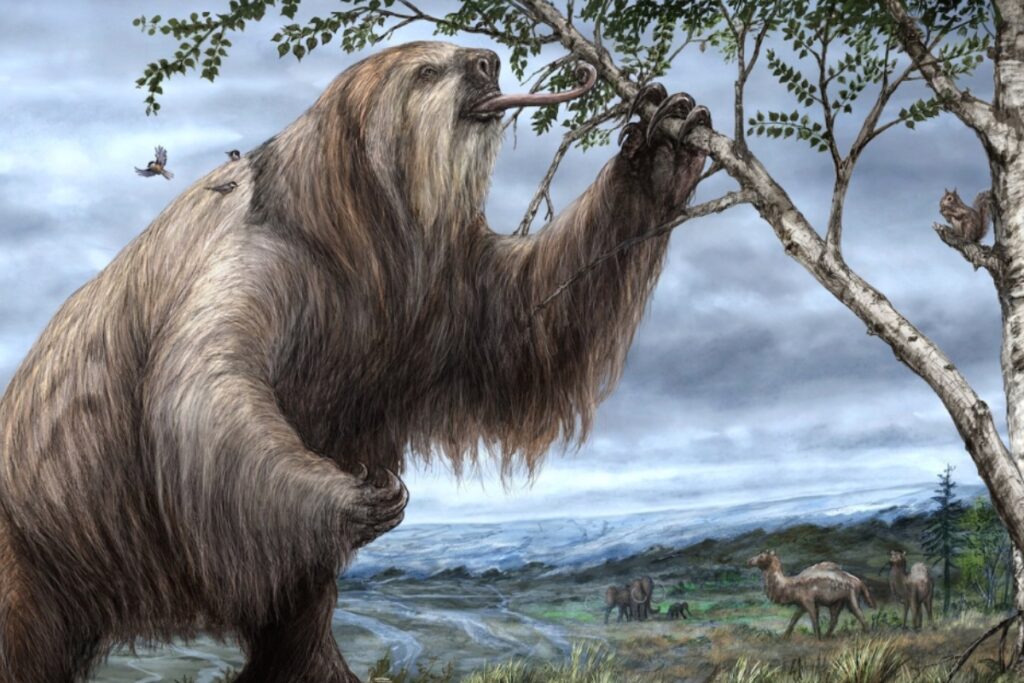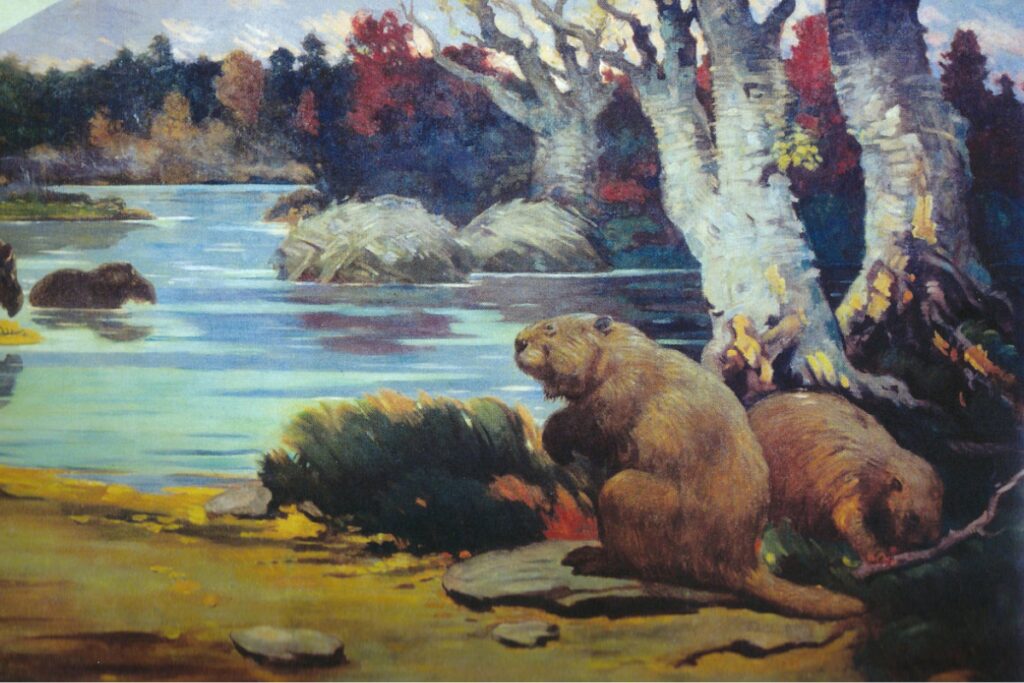
During the last Ice Age, North America was a land of giants, home to an array of massive mammals that thrived in rugged landscapes and cold climates. From towering predators to gentle giants, these remarkable creatures left behind an extraordinary legacy preserved in fossils. Here’s a quick look at ten of these Ice Age titans.
1. Giant Short-Faced Bear (Arctodus simus)

Standing over 11 feet tall on its hind legs, the giant short-faced bear was North America’s apex predator. Unlike today’s bears, it had unusually long limbs, which may have allowed it to run at surprising speeds while covering vast territories. Some scientists think it was primarily a scavenger, while others believe it chased down large prey. Despite its dominance, it vanished around 12,000 years ago, potentially due to the changing climate or competition with early humans.
2. Woolly Mammoth (Mammuthus primigenius)

The woolly mammoth, with its iconic curved tusks and dense, shaggy coat, roamed the tundra and grasslands, surviving on a diet of grasses and shrubs. Standing up to 12 feet tall, this elephantine giant used its powerful tusks to scrape away snow in order to access food. Woolly mammoths are believed to have gone extinct about 10,000 years ago, although a few isolated populations survived on islands for centuries longer before finally disappearing.
3. Saber-Tooth Cat (Smilodon fatalis)

With its fearsome seven-inch teeth, the saber-toothed cat was a fierce predator that likely ambushed large prey, using its powerful limbs to wrestle animals down. Fossils from the La Brea Tar Pits reveal it hunted creatures as large as bison and possibly young mammoths. Unlike modern big cats, the saber-toothed cat had a more compact build that helped it hold onto struggling prey—but made it less agile in open chases.
4. Dire Wolf (Canis dirus)

The dire wolf was a larger, more robust relative of today’s gray wolf that hunted in coordinated packs across North America. Its sheer size and strength allowed it to tackle large prey, and its strong jaws were well-suited to cracking bones. While dire wolves bear a resemblance to modern wolves, they were genetically distinct and may have preferred warmer habitats. The species went extinct roughly 10,000 years ago, around the same time as much of its prey.
5. Jefferson’s Ground Sloth (Megalonyx jeffersonii)

Named in honor of President Thomas Jefferson, who studied its fossils, Jefferson’s ground sloth was an enormous herbivore standing nearly ten feet tall and weighing over a ton. Unlike today’s tree-dwelling sloths, this ancient ground sloth foraged on land, using its large, curved claws to dig for roots and strip bark from trees. It likely moved slowly due to its large size but had a few natural predators due to its bulk and strength.
6. American Mastodon (Mammut americanum)

The American mastodon is often mistaken for its cousin, the mammoth. Slightly shorter but stockier in build, the mastodon thrived in North America’s woodlands. Its teeth, designed to crush and chew coarse vegetation like twigs and leaves, made it well-adapted to forest environments. Fossils suggest that mastodons existed for millions of years before disappearing around 10,000 years ago, likely due to a combination of hunting by humans and changing habitats.
7. Giant Beaver (Castoroides ohioensis)

The giant beaver was roughly the size of a black bear, measuring up to seven feet in length and weighing as much as 300 pounds. Its blunt, oversized teeth suggest it ate softer plants rather than trees, unlike its modern relatives. While today’s beavers are skilled dam-builders, the giant beaver likely lived a more solitary life in large wetlands and rivers. Fossils have been found in various locations on the continent, hinting at a wide distribution.
8. American Lion (Panthera atrox)

One of the largest cats to ever roam North America, the American lion weighed up to 800 pounds and stood nearly four feet tall at the shoulder. Built for strength and stamina, it hunted large prey like bison, horses, and possibly even young mammoths. Compared to African lions, this species had longer legs and a more robust body, likely adapted for running on open plains. Fossils found in dens suggest that, like today’s lions, it may have lived in groups.
9. Yesterday’s Camel (Camelops hesternus)

Camelops, often nicknamed “yesterday’s camel,” roamed the content long before camels made their way to other parts of the world. This camel, about seven feet tall, was adapted for arid regions and had a diet of rougher vegetation like shrubs. Unlike modern camels, Camelops did not have a hump. Its remains show it was well-suited to the challenging environments of Ice Age North America, although it vanished around the end of the Pleistocene.
10. American Cheetah (Miracinonyx trumani)

An incredibly agile predator, the American cheetah evolved to chase down prey on the open plains, likely focusing on pronghorn antelope. Its long-legged and aerodynamic physique resembled that of today’s cheetah, despite it being more closely related to the mountain lion. This evolutionary adaption likely pushed pronghorns to develop the remarkable speed they retain today, even though their ancient pursuer disappeared thousands of years ago.







